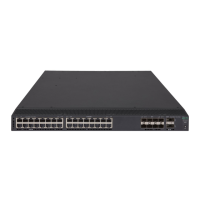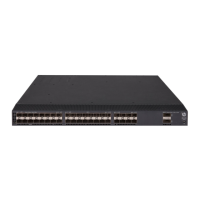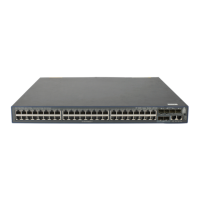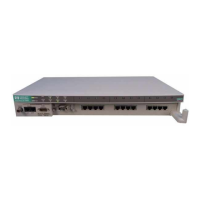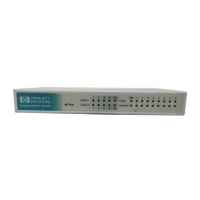31
Figure 27 ToR cabling
Configuring basic IRF settings
After you install the IRF member switches, power on the switches, and log in to each IRF member
switch (see HPE FlexFabric 5901 Switch Series Fundamentals Configuration Guide) to configure
their member IDs, member priorities, and IRF port bindings.
Follow these guidelines when you configure the switches:
Assign the master switch higher member priority than any other switch.
Bind physical ports to IRF port 1 on one switch and to IRF port 2 on the other switch. You
perform IRF port binding before or after connecting IRF physical ports depending on the
software release.
To bind the ports on an interface card to an IRF port, you must install the interface card first. For
how to install an interface card, see HPE FlexFabric 5901 Switch Series Interface Modules
User Guide.
Execute the display irf configuration command to verify the basic IRF settings.
For more information about configuring basic IRF settings, see HPE FlexFabric 5901 Switch Series
IRF Configuration Guide.
Connecting the physical IRF ports
As a best practice to avoid loop topology, first complete IRF configuration and then connect the IRF
member switches.
Use SFP+/QSFP+ cables, or SFP+/QSFP+ transceiver modules and fibers to connect the IRF
member switches as planned.
Wear an ESD wrist strap when you connect SFP+/QSFP+ cables or SFP+/QSFP+ transceiver
modules and fibers. For how to connect them, see HPE Transceiver Modules and Network Cables
Installation Guide.

